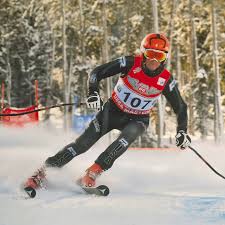Ski racing is one of the most thrilling and challenging sports in the world. The athletes who dominate on the slopes often flying at speeds over 80 mph have mastered a blend of physical conditioning, mental sharpness, and precise technique. But what are the secrets behind the success of world-class ski racers? Let’s take a look at the techniques and strategies that separate the best from the rest.
1. The Art of Line Selection
One of the most crucial skills for ski racers is selecting the best line down the course. This refers to the path a skier takes through the gates, optimizing speed while maintaining control. World-class racers have an uncanny ability to anticipate and adapt their line based on terrain changes and conditions, such as icy patches or soft snow.
Elite racers often use a technique called “edge angling,” where they lean into the slope, increasing their grip on the snow. By finding the perfect balance between carving and skidding, they ensure their skis stay locked on their edge without losing precious speed.
2. Perfecting Carving Technique
Carving is all about precision and power. Ski racers use their edges to “bite” into the snow, carving smooth turns that maintain maximum speed. However, what sets elite racers apart is their ability to carve with extreme precision, minimizing skidding and maximizing their efficiency.
Ski racers often utilize a technique called “early edge engagement.” This involves turning the ski’s edge into the snow at the earliest possible moment to control the trajectory of the turn. At high speeds, the slightest misstep can cost precious fractions of a second, so even minor adjustments in edge engagement can make all the difference.
3. Body Position and Balance
A skier’s body position is key to controlling speed and turning. World-class skiers have a low and forward stance, keeping their center of gravity as close to the snow as possible. This body positioning allows them to react quickly to sudden changes in terrain, whether it’s a bump or a shift in snow conditions.
Racers often keep their upper body stable while letting their legs work to initiate and absorb turns. This separation between the upper and lower body allows for better maneuverability and greater control over the skis.
4. Speed Control Through Flexibility
Although speed is essential, it’s just as important for ski racers to have the ability to manage it. World-class racers maintain their speed while also having the skill to control it in tight situations.
Ski racers rely on a technique known as “flexing” to adjust their skis’ pressure on the snow. By absorbing terrain changes and flexing their knees and ankles, racers can adjust the way their skis interact with the snow, reducing friction and keeping their speed under control.
5. Mental Resilience
Beyond physical technique, ski racing is a mental game. The best racers have a focused, almost meditative, mindset. They must be able to maintain razor-sharp concentration despite the chaotic environment, fast speeds, and intense pressure. Ski racing also requires exceptional visual and spatial awareness, allowing racers to process the course layout, upcoming gates, and potential obstacles with lightning speed.
Top athletes work with sports psychologists to hone this mental resilience. Visualization techniques, where racers mentally rehearse each part of the course, are a common tool for increasing focus and reducing stress.
6. Preparation and Training
Training for ski racing goes far beyond just hitting the slopes. While on-snow training is vital, top athletes spend significant time off the mountain building strength, flexibility, and endurance. Dryland training involves exercises to improve core strength, leg power, and overall stamina, all of which are necessary to handle the physical demands of ski racing.
Another aspect of preparation is technical training. Racers study video footage of past runs, analyzing every turn, gate, and timing split to identify areas for improvement. They also work closely with coaches to perfect their techniques and make small adjustments that can improve their performance on race day.
World-class ski racers are not just athletes; they are experts in technique, precision, and strategy. From their mastery of line selection and carving to their mental toughness and rigorous preparation, these athletes display an extraordinary blend of skill and science.
While the road to becoming a top-tier skier is long and demanding, the rewards are great not only in terms of medals and recognition but in the pure thrill of racing down some of the most challenging and exhilarating courses in the world.

